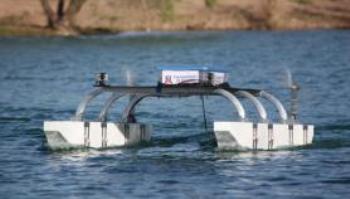UA’s engineer Wolfgang Fink has developed an autonomous robotic lake lander to enable planet exploration. He belongs to the department of electrical and computer engineering at the University of Arizona.
 The lake lander TEX II is the latest component of Wolfgang Fink's autonomous planetary exploration fleet.
The lake lander TEX II is the latest component of Wolfgang Fink's autonomous planetary exploration fleet.
Named ‘Tucson Explorer II’, or ‘TEX II’, the lake lander was introduced by Fink in his paper titled ‘Robotic Lake Lander Test Bed for Autonomous Surface and Subsurface Exploration of Titan Lakes,’ on March 8. His paper was presented at an aerospace conference in Big Sky, Mont, hosted by the Institute of Electrical and Electronics Engineers.
The TEX II is considered to be an autonomous exploration vehicle that can explore the lakes of liquid hydrocarbon on Titan. The first vehicle launched by Fink was a land-based planetary rover, and TEX II is his second innovation.
He envisions an orbiting satellite to identify the potential areas of a planetary surface, using atmospheric blimps. The blimps can then direct lake landers and surface-based rovers to collect samples in situ and to scrutinize geological features. Using Internet connection, TEX II can be autonomously directed from anywhere in the world.
Designed as a high-stability catamaran, the portable and highly modular TEX II enables diverse onboard sensors to adhere to the surface and subsurface of the liquid and water, upon which it is installed. Weighing around 100 lb, its elevated deck is capable of holding 150 lb payload of batteries, computers, and sensors. The twin hulls measure 6 ft in length and can be deployed up to 5 ft apart.
The electric motors capable of leveraging the TEX II, rotationally to move backward or forward, thereby powering the air-propellers installed behind each hull. The propellers are installed with increased distance between them for maximum torque generation during turning.
Perturbation of water around TEX II is reduced by the shallow draft of the fortified Styrofoam hulls. Therefore, onboard sensors’ interference with subsurface telemetry will be reduced. The catamaran hulls enable the alteration of the entire chassis and sensor deck from the alternative propulsion system.